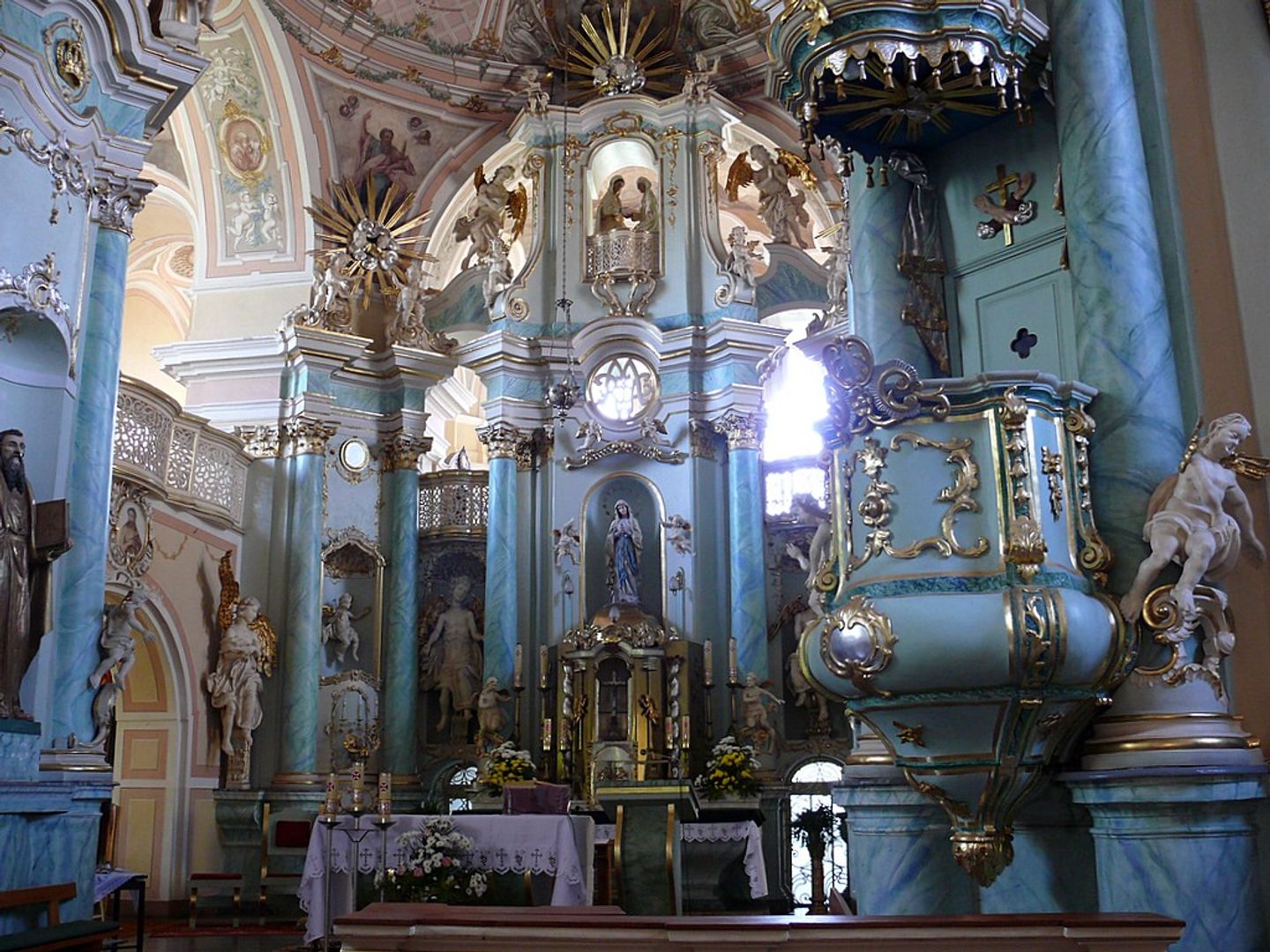The Church of the Visitation of the Blessed Virgin Mary and the Bernardine Monastery in Koło
6.82

Overview
The Church of the Visitation of the Blessed Virgin Mary and the Bernardine monastery in Koło is a Late Gothic and Late Baroque complex from the 15th and 18th centuries, which played an important role in the history of the region. The Bernardine Order, brought to Koło in 1466 by Jan Hińcza of Rogów, gained the support of numerous benefactors, including Duchess Anna of Sochaczew. Only remnants of the original Gothic church, which was demolished in 1773, have been preserved in the architecture of the new building, consecrated in 1788. The present church, in the Jesuit style, features two towers, a Baroque interior, and seven altars, including the main altar with polychrome paintings. The church also houses valuable paintings, tombs, and historical symbols, such as the tomb of Bartłomiej Wilczyński. The monastery became a venue for assemblies of the nobility of Greater Poland and, in the 18th century, served as a pastoral center, including a novitiate and theological study. During World War II, the monastery endured brutal occupation, served as a headquarters for German troops, and the monks were arrested by the occupiers. After the war, the monastery became an administrator for nearby parishes and co-organized numerous charitable activities. In 1950, renovation of the monastery and church began, and in 1958, the interiors were restored. The church is also a site of indulgence feasts, held from May 31 to December 8. In 2018, celebrations took place there to mark the 550th anniversary of Polish parliamentarism, highlighting its historical and cultural significance in regional tradition. The monastic complex remains a symbol of the spirituality and culture of the region, and its rich history reflects the social and religious changes that have taken place over the centuries.
Location
2025 Wizytor | All Rights Reserved